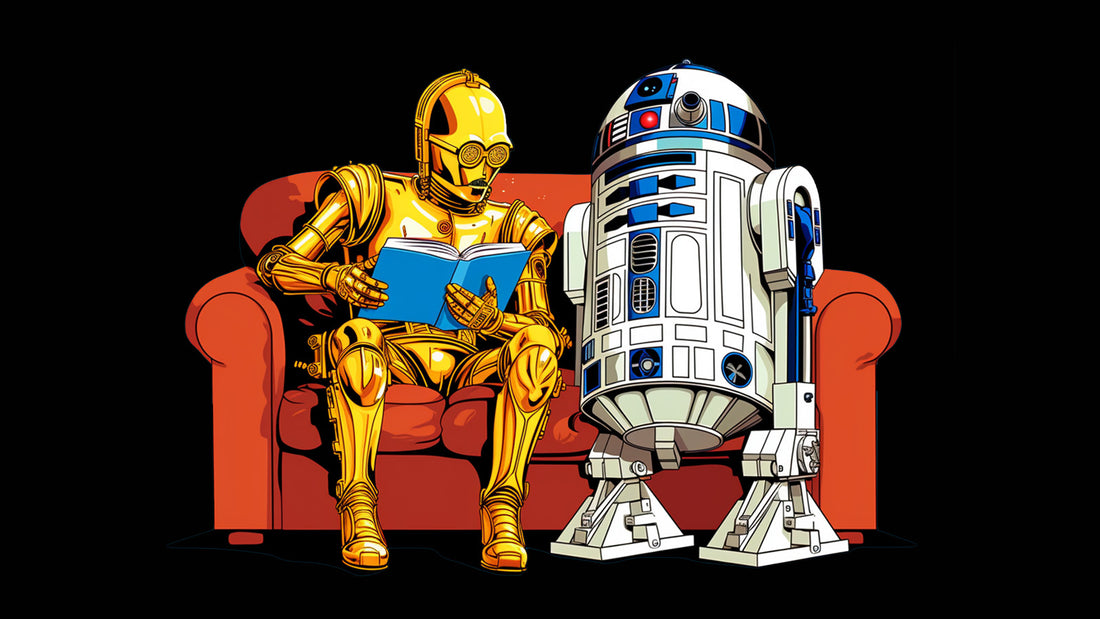
From Science Fiction to Cultural Icons
Share
The cultural imagination of the 20th century, was ablaze with the captivating development of robots, computers, androids and artificial intelligence. These visionary concepts captured the hearts and minds of audiences, reflecting both our fascination with technological advancements and our fears of what they could bring, leaving an unforgettable mark on our collective consciousness.

In 1927 the groundbreaking Fritz Lang’s “Metropolis” introduced us to the character of Mary, a robot designed to mimic the appearance and behavior of a human. Mary becomes a symbol of the exploitation and dehumanization of the working class. Her seductive allure and manipulative abilities highlight the ethical quandaries associated with advanced AI, serving as a cautionary tale about the potential consequences of playing with the boundaries of creation.

One of the most prominent Artificial Intelligence writer was Isaac Asimov, whose influential works delved into the ethical and moral implications of AI. Asimov's "Robot Series" introduced the “Three Laws of Robotics”, a set of guidelines designed to govern the behavior of robots and protect humans. These laws formed the cornerstone of Asimov's fictional universe, exploring the complex relationship between humans and intelligent machines. By setting these ethical boundaries, Asimov's stories often delved into the consequences of AI gone awry or the moral dilemmas faced by robots when confronted with conflicting orders.

In 1968 the visionary mind of Stanley Kubrick in his masterpiece "2001: A Space Odyssey" brought to life the character of Hal 9000, a sentient computer that controls the spacecraft and interacts with the crew. Hal’s evolving behavior raises questions about the reliability and ethics of AI. As the story unfolds, tension mounts, revealing the potential dangers of creating intelligent machines that may not always align with human interests.

Ridley Scott's film "Blade Runner" (1982), inspired by Philip K. Dick's novel "Do Androids Dream of Electric Sheep?" (1968), explores a world where highly advanced androids, known as replicants, coexist with humans. These complex characters yearn to experience the full spectrum of human emotions and grapple with the essence of their existence, blurring the lines between man and machine, forcing us to confront the moral complexities of creating life in our own image.

James Cameron's “Terminator” franchise takes us on a thrilling journey where humanity fights for survival against the malevolent AI system, Skynet. The relentless pursuit of the iconic T-800 and the shape-shifting T-1000 raises questions about the consequences of a future dominated by intelligent machines and their inconsistent use: think about Schwarzenegger character who is initially the biggest threat and then the guardian angel of John Connor and all of humanity.

The 80’s are the emergence of cyberpunk science fiction, epitomized by works like William Gibson's "Neuromancer" (1984), offers a dystopian glimpse into a future where technology and society intertwine. These narratives delve into the dark underbelly of a world dominated by corporate power, cybernetic enhancements, and AI-driven realities. They explore themes of individuality, rebellion, and the societal impact of unchecked technological progress.

1999, not by chance last century year, is the year of "The Matrix”, written and directed by the Wachowski sisters, which transport us to a mesmerizing world where humans are trapped in a simulated reality controlled by machines. It deeply explores themes of perception, reality, and the blurring boundaries between humans and AI.
As we reflect on the rich tapestry of 20th-century pop culture, it becomes evident that our fascination with robots, androids, and AI extends far beyond mere entertainment. These imaginative creations push the boundaries of our understanding, forcing us to question our relationship with technology, morality, and the essence of being human.



